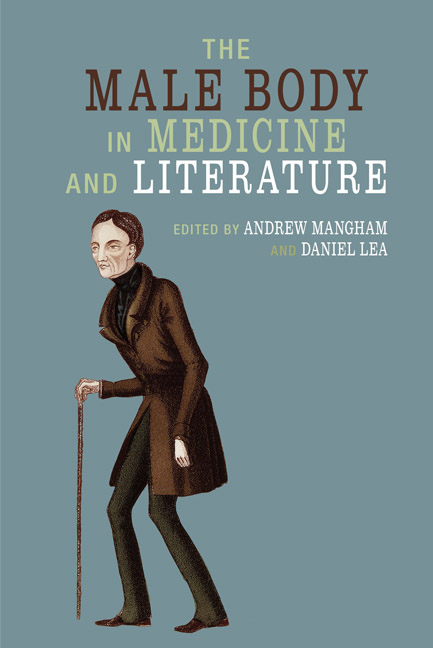Book contents
- Frontmatter
- Contents
- Acknowledgements
- Notes on Contributors
- Introduction
- Part One Enquiry and Experimentation
- Part Two Wounded and Psychopathologised Bodies
- 5 The Male Wound in Fin de Siècle Poetry
- 6 The Cacophony of Disaster: The Metaphorical Body of Sound in Don DeLillo's Falling Man
- 7 ‘Human Nature is Remorseless’: Masculinity, Medical Science and Nervous Conditions in Virginia Woolf's Mrs Dalloway
- 8 ‘A man must make himself’: Hypochondria in Maria Edgeworth's Ennui
- Part Three Fear, Confusion and Contagion
- Index
7 - ‘Human Nature is Remorseless’: Masculinity, Medical Science and Nervous Conditions in Virginia Woolf's Mrs Dalloway
from Part Two - Wounded and Psychopathologised Bodies
- Frontmatter
- Contents
- Acknowledgements
- Notes on Contributors
- Introduction
- Part One Enquiry and Experimentation
- Part Two Wounded and Psychopathologised Bodies
- 5 The Male Wound in Fin de Siècle Poetry
- 6 The Cacophony of Disaster: The Metaphorical Body of Sound in Don DeLillo's Falling Man
- 7 ‘Human Nature is Remorseless’: Masculinity, Medical Science and Nervous Conditions in Virginia Woolf's Mrs Dalloway
- 8 ‘A man must make himself’: Hypochondria in Maria Edgeworth's Ennui
- Part Three Fear, Confusion and Contagion
- Index
Summary
The First World War may be considered a dramatic watershed in popularly received notions of masculinity and military medicine in Britain. Informed largely by the imperial imaginary of enterprise and endeavour and manufactured through the discourses of Boy Scouts and public schools, pre-war British masculinity had its most hegemonic representation in the ‘strong and silent’ strand, trained against exhibiting emotions and all that characterised the ‘sissy’. As Julia Grant argues in her astute analysis of the paradigm shift in the politics of turn-of-thecentury British masculinity:
While effeminate or unmanly boys were not artefacts of the twentieth century, the meaning attached to them shifted in conjunction with the politics of masculinity and transformations in child rearing, gender socializations and the new sciences of human development. Nineteenth century sissies were castigated by their peers but twentieth century sissies bore clinical as well as social stigma. As the peer group loomed ever larger as a means of the socialization of children, conforming to the code of boyhood became increasingly central to the establishing of the normalcy of boys’ personalities and behaviours.
A significant shift in dominant notions and practices of manliness and military medicine in post-First-World-War Britain may largely be attributed to the phenomenon of shell shock, which intrigued neurologists and civilians alike. As a pseudo-medical term as well as a social pejorative, shell shock enacted an ironic inversion of the gendered construct of hysteria, a condition that had historically been classified as a female malady rooted in the uterus.
In her study of masculinity crisis in the early twentieth century Sandra Gilbert examines how the structural similarities between the claustrophobic domestic space and the closed trenches of the First World War brought the hysteric and repressed Victorian female into problematic proximity with the nervous male soldier of the First World War. In a similar vein, Eric Leed argues how the doctors of the combatants realised that the ‘symptoms of shell shock were precisely the same as those of the most common hysterical disorders of the peacetime, though they often acquired new and more dramatic names in War …. What had been predominantly a disease of women before the War became a disease of men in combat.’
- Type
- Chapter
- Information
- The Male Body in Medicine and Literature , pp. 120 - 136Publisher: Liverpool University PressPrint publication year: 2018



